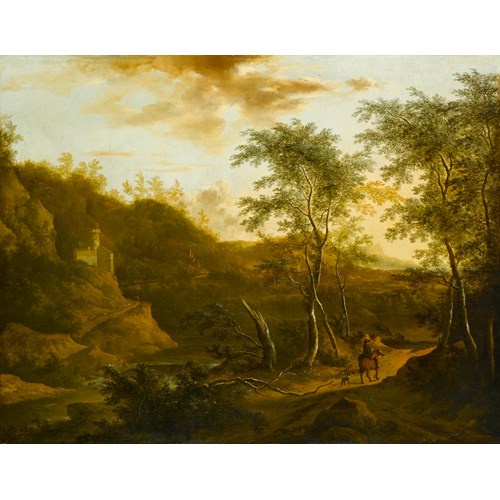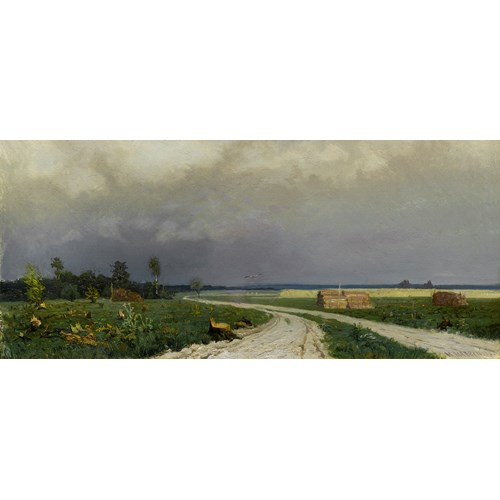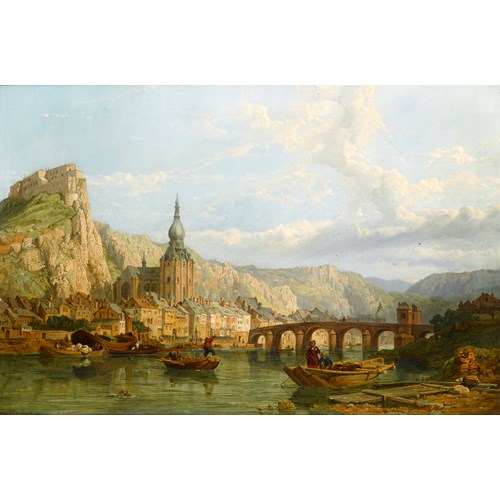Marketplace
Study of a Model Posed as a Seated Hercules
Giuseppe Maria Crespi
Study of a Model Posed as a Seated Hercules
Period 1600-1750, 17th century, 18th century
Origin Italy
Medium red chalk (recto), black chalk (verso)
Dimension 35 x 29 cm (13⁴/₅ x 11²/₅ inches)
This solidly muscular study of a figure masquerading as Hercules inevitably owes much to the time that Giuseppe Maria Crespi spent at a life-drawing academy, as well as to the figure drawings of Michelangelo. The seated Hercules’ pose allows the artist to experiment with perspective, as the figure’s enormous hand shows.
Jacob Bean has noted that Crespi’s drawings and paintings often have little in common: ‘it was only with brush in hand that he took those liberties that give his work its particular savour.’¹ This is in spite of the sometimes identical subject matter; Crespi did, for instance, fresco part of the Palazzo Pepoli in Bologna with The Triumph of Hercules. As a draughtsman, Crespi seems to have been a diligent professore del disegno working in an established Bolognese tradition. His Hercules Holding a Club (Recto); A Nude Tracing a Circle with a Compass (Verso) provides a useful comparison to the present work, especially the standing Hercules figure wielding a club. The style, both of this work, and of the present Study of a Male Nude Posed as Hercules, recalls the artistic style of one of Crespi’s tutors, Maria Canutti (1625-1684).
The attribution to Giuseppe Maria Crespi was proposed by Donatella Biagi Maino, who has suggested that the present work must be a rare example of the artist’s early style. In his youth, Crespi frequented the workshop of the Bolognese Carlo Cignani (1628-1719) and in the mid 1680s he attended a drawing academy headed by Cignani. When his master left for Forli, Crespi took over his studio with Giovanni Antonio Burrini (1656-1727).
Donatella Biagi has associated the present sheet with Crespi’s assiduous studies made in life-drawing academies, which he was attending at that time in the Casa Ghisilieri. She makes an interesting comparison with the red chalk standing academy, now in Stuttgart,² although that seems closer to the tradition of the Accademia Carraccesca degli Incamminati.³ The present study shares some similarities also with the work of Burrini.
Crespi was born in Bologna and, according to Waterhouse, his work represents, ‘the last flash of genius in a dying school’ and ‘a deliberate reaction to all that was solemn and academic in the Bolognese tradition.’⁴ In his youth he copied the frescoes of the Carracci family and the early altarpieces of Guercino (1591-1666). He was also heavily influenced by the Venetian school of artists including Correggio (1489-1534), Titian (c.1485/90-1576) and Paolo Veronese (1528-1588). Crespi later drew artistic inspiration from north of the Alps, in particular in his commissions in Florence for Prince Ferdinand of Tuscany. In general, Crespi’s oeuvre plays on several registers. He is known on the one hand for his genre scenes that depict every-day life, and the intimacy of which frequently carried over into his religious works, full as they are of tenderness and domestic details; at the same time, however, when depicting religious, antique or mythological themes, he produced works of a far more monumental and dramatic character, often with a decidedly tragic slant.
¹ Jacob Bean Drawings by Giuseppe Maria Crespi, Master Drawings iv, 1966, p. 419.
² Sammlung Freiherr Koenig-Fachsenfeld; see M. Pajes Merriman, Giuseppe Maria Crespi, Milan 1980, p. 73, reproduced fig. 32.
³ M. Pajes Merriman, Giuseppe Maria Crespi, Milan 1980, p. 73, reproduced fig. 32.
⁴ E. Waterhouse, Italian Baroque Painting (Second Edition), 1969.
Jacob Bean has noted that Crespi’s drawings and paintings often have little in common: ‘it was only with brush in hand that he took those liberties that give his work its particular savour.’¹ This is in spite of the sometimes identical subject matter; Crespi did, for instance, fresco part of the Palazzo Pepoli in Bologna with The Triumph of Hercules. As a draughtsman, Crespi seems to have been a diligent professore del disegno working in an established Bolognese tradition. His Hercules Holding a Club (Recto); A Nude Tracing a Circle with a Compass (Verso) provides a useful comparison to the present work, especially the standing Hercules figure wielding a club. The style, both of this work, and of the present Study of a Male Nude Posed as Hercules, recalls the artistic style of one of Crespi’s tutors, Maria Canutti (1625-1684).
The attribution to Giuseppe Maria Crespi was proposed by Donatella Biagi Maino, who has suggested that the present work must be a rare example of the artist’s early style. In his youth, Crespi frequented the workshop of the Bolognese Carlo Cignani (1628-1719) and in the mid 1680s he attended a drawing academy headed by Cignani. When his master left for Forli, Crespi took over his studio with Giovanni Antonio Burrini (1656-1727).
Donatella Biagi has associated the present sheet with Crespi’s assiduous studies made in life-drawing academies, which he was attending at that time in the Casa Ghisilieri. She makes an interesting comparison with the red chalk standing academy, now in Stuttgart,² although that seems closer to the tradition of the Accademia Carraccesca degli Incamminati.³ The present study shares some similarities also with the work of Burrini.
Crespi was born in Bologna and, according to Waterhouse, his work represents, ‘the last flash of genius in a dying school’ and ‘a deliberate reaction to all that was solemn and academic in the Bolognese tradition.’⁴ In his youth he copied the frescoes of the Carracci family and the early altarpieces of Guercino (1591-1666). He was also heavily influenced by the Venetian school of artists including Correggio (1489-1534), Titian (c.1485/90-1576) and Paolo Veronese (1528-1588). Crespi later drew artistic inspiration from north of the Alps, in particular in his commissions in Florence for Prince Ferdinand of Tuscany. In general, Crespi’s oeuvre plays on several registers. He is known on the one hand for his genre scenes that depict every-day life, and the intimacy of which frequently carried over into his religious works, full as they are of tenderness and domestic details; at the same time, however, when depicting religious, antique or mythological themes, he produced works of a far more monumental and dramatic character, often with a decidedly tragic slant.
¹ Jacob Bean Drawings by Giuseppe Maria Crespi, Master Drawings iv, 1966, p. 419.
² Sammlung Freiherr Koenig-Fachsenfeld; see M. Pajes Merriman, Giuseppe Maria Crespi, Milan 1980, p. 73, reproduced fig. 32.
³ M. Pajes Merriman, Giuseppe Maria Crespi, Milan 1980, p. 73, reproduced fig. 32.
⁴ E. Waterhouse, Italian Baroque Painting (Second Edition), 1969.
Period: 1600-1750, 17th century, 18th century
Origin: Italy
Medium: red chalk (recto), black chalk (verso)
Signature: Verso: Study of a Male Figure
Dimension: 35 x 29 cm (13⁴/₅ x 11²/₅ inches)
Provenance: Mastai Ferretti Collection, Rome
More artworks from the Gallery









